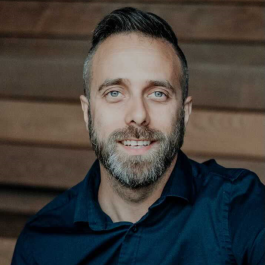How to scale Customer Success without losing the human touch
Striking the right balance between automation and human talent takes work, but ends in efficiency.
Often we hear people say, “I liked them before they got big” when it comes to musicians or entertainment stars. The same sentiment can apply to companies.
Why? Companies that scale too quickly are prone to losing one-to-one customer communication. As a result, prized customers feel lost or ignored when they most need help using a product or measuring success.
Looking for a solution, we sat down with two local customer success managers relying on the power of automation to scale their customer experience capabilities. And while their teams differ in the services they offer, the intent remains the same: enhance human capabilities with assistance from automation, but eliminate neither fully.
“Customer success doesn’t have a one-size-fits-all approach,” Gustavo Bianco, head of customer success at Restream, said. “We apply automation intelligently, meaning we understand which processes need to be automated and when.”
For Adam Ferenzi, VP of Customer Success at BigCommerce, it’s also about talent. Hiring in droves can fill seats to satisfy demand, but it can’t make an employee care about the customer they’re intended to help.
“If a candidate’s hungry to learn, passionate about helping our customers grow, and an asset to our culture, then they’re going to be great,” Ferenzi said. “There are great efficiency gains with automation, but at a certain point you need human interaction.”
By building out the right teams and proper tech, both leaders said they have struck the right balance.

Head of Sales & Customer Success
@ Restream
In Bianco’s experience at Restream, a live video streaming platform, creating a precise and repeatable process is crucial to properly scaling customer success across all departments.
What are the most important considerations when scaling a customer success team, and why?
Scaling customer success requires a mix of people, processes, data and technology. For customer success to become part of the Restream DNA, we make sure that everyone in the company clearly understands the desired outcome and how to help customers achieve that. Customer success is more than just a department — rather, a state of mind across all departments at Restream. Starting from a clean and neat UI/UX to a trustworthy and reliable service that includes top-notch development to a well-trained and customer-centric frontline team that’s ready to delight customers in each interaction with customers.
To successfully scale any functional area of a company, creating a precise and repeatable process is critical. These tasks alone are pretty challenging in any scaling organization; however, customer success requires more cooperation with and assistance from every other organization than any other group. The reality is, no customer success team will ever stand alone in the quest to improve retention and help customers achieve their desired outcome.
What tools or technologies do you use to make customer success more scalable?
Building a smooth customer experience is not easy. Having the right tech stack will improve the quantity and the quality of interactions you’ll have with your customer base. However, finding the best tools will vary from business to business. It’s a learning process, and you’ll change and improve your tech stack as you get the ball rolling.
At Restream, we mapped out all tools we use to connect with our customers and how much actionable data we get from them. Dashboards were vital in helping us identify patterns and customer behaviors. Getting a comprehensive view of customers and understanding trends and risks with powerful analytics helped identify the tools needed.
We use Intercom to offer a 24/7 support channel to our entire customer base, including freemium users. We believe that every customer interaction is an opportunity to build a relationship and earn a lifelong fan. We have also automated our cancelation flow using a dedicated tool, Brightback. Brightback allows you to configure targeting rules to present customer groups with different offers. As we keep improving on delivering the best customer success, we will continue adding new and effective tools.
Customer success is more than just a department — rather, a state of mind across all departments.
How are you striking the right balance of automation and human touch?
Customer success doesn’t have a one-size-fits-all approach. CS automation must also be adapted to each CSM workflow. By automating customer touch points, whether they’re designed to activate, educate or gauge health, you’re able to have a better read on what’s going on than by attempting to do everything manually. By automating time-consuming, repetitive tasks, you’re able to free up your CSMs to focus on customers. Customer success automation is beneficial because it eliminates human errors and minimizes wait time. However, the downside of automation is that it makes relationship building more challenging by excluding the human approach.
At Restream, we apply automation intelligently, meaning we understand which processes need to be automated and when. In our experience, partial automation works best because you can save time on manual tasks and reports. You get to do automatic research and track KPIs via health scores, but you also maintain a human approach when the customer needs it the most.

Vice President, Customer Success Services
@ BigCommerce
At BigCommerce, Ferenzi relies on hiring top customer success talent, as well as ever-evolving tools and technology to coach that talent.
What are the most important considerations when scaling a customer success team, and why?
It comes down to talent and not lowering the bar. There can be a pressure as you scale to just get “people in seats” and hire faster, but if you’re not hiring great people, then you’re doing a disservice to your customers and your team.
I always say you can’t teach someone to care. I’m not bothered if somebody doesn’t have the perfect background or education, we can teach them the things they need to know. If a candidate’s hungry to learn, passionate about helping our customers grow, and an asset to our culture, then they’re going to be great. I would rather wait to find that person than hire three people that have the right credentials but think they’re above the team or don’t care about the customers.
What tools or technologies do you use to make customer success more scalable?
We leverage a variety of different tools and technologies to help measure, analyze and generally keep a pulse on how we’re performing. We have the luxury of having a really talented tools development team in Workforce Management. They are extremely adept at pulling data from our technology suite; CRM, survey tools, telephony, sentiment analysis tools, etc. Once we have all the data we can put it together, slice and dice it, visualize it and do deep dives into our performance to see what we need to do better or what technology we need to add to supplement.
We recently underwent a pretty massive upgrade to our CRM and I think one of the next big things for us is exploring how we can better leverage chatbots. Our merchants have been increasing their usage of chat more and more. Having the capability to gather information from them before getting to an agent has some exciting implications. We can reduce the time in getting an answer or the right advice, which results in ultimately having the best customer experience possible.
Automation is not a tool to eliminate coaching, but rather a tool to make that coaching more effective and efficient.
How are you striking the right balance of automation and human touch?
There are great efficiency gains you can achieve with automation, but at a certain point you need human interaction. I love our tools that can do language processing to aggregate conversational information. Ultimately, I want information so we can quickly and easily find the right interactions to help coach our people. It’s not a tool to eliminate coaching, but rather a tool to make that coaching more effective and efficient.
If we can automate the flow of information to a merchant based on where they are in the life cycle and what the data shows they are most likely to do next, it becomes a fantastic opportunity to leverage automation so they don’t have to bother picking up the phone to ask a question. However, if we automate all the answers in an attempt to deflect any outreach and make it more difficult to get live help when they need it then we have made the customer experience worse through automation, not better. Built In Austin, Tyler Holmes

Hakan Ozturk
Founder, theCScafe.com, #1 Weekly Customer Success Newsletter
Hakan Ozturk is a Paris-based Customer Success leader with over 15 years of experience in the computer software industry. Passionate about driving growth and delivering value to strategic customers, Hakan has established himself as a trusted industry expert. As the Founder of The Customer Success Café Newsletter and TopCSjobs.com, Hakan provides valuable industry insights and daily-updated job opportunities worldwide in the field of Customer Success. Connect with Hakan to boost your career in CS and your company’s potential for massive growth.

Leave a Reply